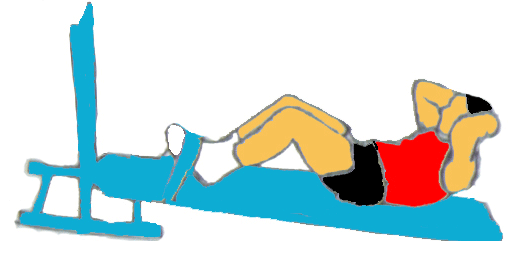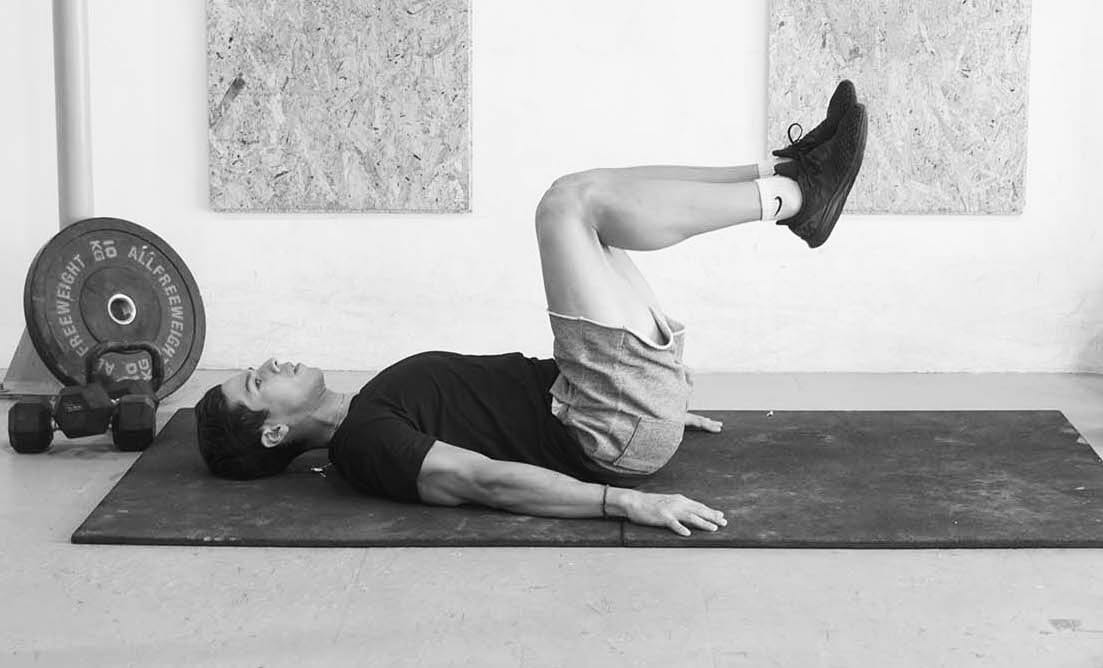From the vault: time to relegate the traditional sit-up to the Dustbin of History.

Note: I've added a whole bunch of new subscribers recently, and, as a result, I'll occasionally send out an article from the archives.
Imagine one of the most universally unpleasant memories in history: the high school gym class. Now focus on some of the visceral recollections from that time: the musky smell. The angry (and often out-of-shape) gym coach. The unrequited crushes. Being picked last. The running. The jumping jacks. And the sit-ups.
They all sucked. But the sit-ups were a special kind of hell.
Perhaps, as you were incessantly trying to raise your back off the ground while your feet were being held by someone else, (or tucked into something stable) you thought “this is just so unnecessary.”
Well, if that describes you, congratulations. You were right. Those “classic" sit-ups should be consigned to the dustbin of history. (Along with the angry gym coach.) The fact of the matter is that not only were they unnecesary, those types of sit-ups are unhealthy.
There are two main problems with that exercise: form and volume. Let's take form first. Most people lack core strength. This is especially true in the formative years of high school. And while this exercise is theoretically designed to target your abs, the lack of core strength is a significant impediment.
You could do a simulation of the exercise right now. Lay down with your back flat and tuck your feet beneath something solid and immovable (such as your bed.) Most people perform the exercise with two hands tucked beneath their head. Now try executing the sit-up. Notice what muscle groups are being utilized. The first thing you'll probably notice is that your neck is coming off the ground first. That's because the load on the ab muscles is too great to generate the movement. Hence, the load is shifted to the neck muscles. This can cause a significant strain. The next group of muscles that are improperly triggered is the lumbar (lower back) complex. Most people will slightly arch their back while coming up, which risks lower back injury. Lastly, most people overcompensate with their quads (front leg muscles) while doing this version of the sit-up. While not necessarily an injury risk, it does demonstrate how ineffective it is for targeting the ab complex.
The second part of the problem with this exercise is volume. This is actually a problem with most exercises — but particularly those done incorrectly. The old adage "more is better" still holds sway in much of the fitness world. Chalk it up to the ethos of "no pain ... no gain." Every Hollywood movie that depicts sadistic gym teachers has them barking "Drop and give me twenty!" This doesn't happen in real life.* Doing twenty or thirty crappy sit-ups or push-ups will not result in stronger abs or core muscles. It just might result in injury, though. It's much, much better to focus on form than on volume.
Here are a few alternative suggestions to the "classic" sit-up:
(1) Plank.

This is one of the "bedrock" exercises (along with the push-up and body weight squat). Lie on the ground with your weight supported by your elbows, shoulder length apart. Make sure your feet are wide, roughly equivalent with your shoulders. Keep your back straight and head elevated. Tighten your abs and butt. Try to hold for twenty seconds, and increase by 20 second increments. One minute is great. Two minute is fantastic. Any more than three minutes is pro. **
Alternatively, the traditional plank is too difficult, you can hold a plank in a push-up position, which is much less "ab intensive," and has the added benefit of strengthening your deltoids (shoulder) muscles and the arm muscles (triceps, biceps, etc.)
(2) Knee-lifts.

Lie on your back. Bend your knees and use your abs (tightening and drawing inward) to bring them up to your chest. Make sure your knees are 90 degrees (bent) the entire time. Bring them back out in a bent position, until they are positioned just above your groin. Make sure not to straighten your knees. Lengthening your legs in an extended position while on your back will place way too much strain on your back. Try for five and gradually increase by increments of five.
Addendum:
* This actually does happen. It happened in high school. A group of kids (including me) were swearing within earshot of a pious math teacher who was also a gym coach. He actually bellowed the immortal phrase "drop and give me twenty." Fortunately, back in those days I was really fast, because my push-ups were terrible. I ran away before he could identify me.
** The world record for a plank is nine hours and thirty eight minutes (!) by a Czech man named Josef Salek. If you're ever wondering how to put that unread copy of "Infinite Jest" to good use, here you go.
Joshua Brandt is an Oakland based personal trainer. He can be reached at joshua@joshuabrandtpt.com or (415) 412-7339.
If you enjoyed reading this article, please pass it along!
Member discussion